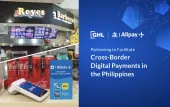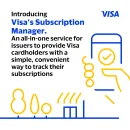Consolidating the payments game is just step one in Southeast Asia
By Nicko WidjajaWhilst the Chinese market is big enough to allow for two major e-payments players, Indonesia needs to unify efforts from otherwise competing tech companies.
As Alibaba and Tencent come to define the e-payments arena in Asia, tech companies in Southeast Asia continue vying for the top spot in the digital payments battle. Indonesia as a nation has never been this focused on establishing an all-inclusive cashless transaction culture.
Over the past few decades, credit cards were one of the most common payment types used by online merchants around the world, despite their costly fees and strict rules from banks and regulators. But unlike in developed markets like North America, it quickly became evident that Indonesia would never embrace credit cards in the same way. To date, the world's largest archipelago still clocks less than 5% credit card penetration.
However, instead of banging our heads against the wall in Southeast Asia trying to get locals to use credit cards, we’ve witnessed something different entirely: a straight-to-mobile leapfrog effect for digital payments.
Things began modestly. Mobile network operators in Indonesia took the lead to apply e-payments systems to things like prepaid phone credits, utility bills, and remittance services. The approach was pioneered by Telkomsel’s T-Cash in 2007, followed by Indosat’s Dompetku in 2008, and XL Tunai in 2012.
Adoption and development of the approach, however, fell short of many people’s hopes due to regulatory limitations and tricky tech requirements such as expecting folks to input complex payment codes to complete each transaction. The users seemed to struggle with this, ultimately keeping these systems from reaching mass adoption. It also didn’t help that use cases were extremely limited due to a nascent ecosystem where most merchants were still unfamiliar with e-payments. In short, it was just too early.
Since then, however, nearly every man, woman, and child in the country have gotten their hands on a smartphone with some kind of mobile internet access. This illuminated a path for e-payments as we see them today in the country. It started with ride-hailing and e-commerce, then snowballed to a point where mobile payments can now be used for a big portion of daily transactions, both online and offline.
China as a time capsule, but not a blueprint
Southeast Asia’s super app Grab was one of the pioneering tech companies to offer an in-app payments feature for all the services available in its digital playground. In 2017, Grab launched its own e-wallet GrabPay, hoping to follow a similar trajectory toward regional e-payments dominance that WeChat Pay and Alipay cultivated in China.
China has made cashless payments available across the country for quite some time. Forbes reported that in 2016 China’s mobile payments hit US$5.5 trillion, almost 50 times the size of America’s US$112 billion markets. A study conducted by Tencent and Ipsos showed 40% of Chinese locals carry around less than US$16 in cash on any given day.
The convenience, security, and backing from digital mega-companies like Tencent and Alibaba were enough to convince large swaths of unbanked Chinese to embrace a cashless lifestyle. WeChat Pay gives a billion users convenience by integrating itself into their daily lives. This means allowing consumers to easily pay for simple needs such as electricity, gas, and water bills, but also internet, phone credits, online shopping, movie tickets, and more.
Meanwhile, Alipay (by virtue of being born from Alibaba) entrenched itself within the two biggest e-commerce platforms in China, Tmall, and Taobao. This allowed Alipay to expand its business into a full-blown fintech juggernaut we now know as Ant Financial.
The firm today offers a plethora of key financial services, including digital microloans to merchants and businesses, an online investment platform, a digital bank for SMEs, a marketplace for various financial products, and more.
The time capsule model does apply—meaning what happened ten years ago in China will soon take place in a similar fashion across ASEAN. But whilst the Chinese are big enough and homogenized enough to allow for two major players, Indonesia, for example, is a fragmented and slightly different animal.
To get to the same level as China, the local e-payments industry needs to build an ecosystem that unifies efforts from otherwise competing tech companies.
Ongoing fragmentation incurs a cost
Indonesia’s top tech companies have been racing for a few years to acquire startups that complement their digital payments services. GoPay (by chief Grab rival GoJek) tops the list of Indonesian e-wallets, followed by Ovo, Dana, LinkAja, and Jenius based on monthly active users, according to App Annie’s Q2 2019 data. Although it’s also worth noting that separate reports claim OVO holds the top spot.
Industry experts will say that the influx of digital wallets into Indonesia might seem promising, but actually it creates a lot of work for merchants by asking them to adopt a bunch of different payment options. The discount wars are also harsh battlegrounds. They result in small margins that make sustainability a truly questionable prospect for many of these e-wallet contenders.
Indonesian economist and ex-Finance Minister Chatib Basri said last year that the unsustainable business practice will only bring systemic devastating impact, especially when there comes a bottleneck in funding. So it’s not out of the realm of possibility that consumers using the wrong e-wallet today will one day experience a jarring shove toward a new one.
Minimally invasive consolidation
Payment processes in Indonesia have become fragmented and inconvenient not only for merchants but also for consumers. Your spouse’s preferred e-wallet may prove perfect for the nearby grocery store, but utterly useless at the cafe across the street. The situation leaves gaps that (sooner or later) need to be filled. The industry needs to consolidate soon, but the demise of some contenders and inevitable M&A events for others may not be the only way this can happen.
Imagine paying your small local food vendor with a simple QR-scan that already has Quick Response Indonesian Standard (QRIS), backed by the monetary authority, and is integrated with existing QR-based payment apps such as GoPay and OVO. This is already happening.
Many public and private sector stakeholders believe that once QRIS is able to take hold in the market, there will no longer be fragmentation within—or a monopoly of— Indonesia’s e-payments space.
QR standardization might slow innovation in the local mobile payments sector, but it may also set it on a better long term growth path, one with a stronger foundation that still ensures healthy competition between mobile payments operators. One key thing to note is that the discount war is bound to end soon, as QRIS takes a more restrictive posture toward the participating players.
This means the next phase of the war is not just getting sellers to adopt the tech—that is arguably the easy part. Instead, the key will be multiplying use cases and building out the avenues through which money can cycle, round and round. For example, the fact that street food vendors accepting digital payments doesn’t necessarily mean a whole lot if they can’t turn around and use an app to buy vegetables at the nearby wet market.
The e-payments pie is still wide open, as Bank Indonesia claims Indonesians are still carrying around more than US$46 billion in cash on any given day.
All things considered, consolidating the payments game in markets like Indonesia is just the first step toward a society with better financial and economic inclusion. But it’s still too early to call a clear winner. We need to put this into perspective so that we can move on to equally important financial services.

















 Advertise
Advertise






